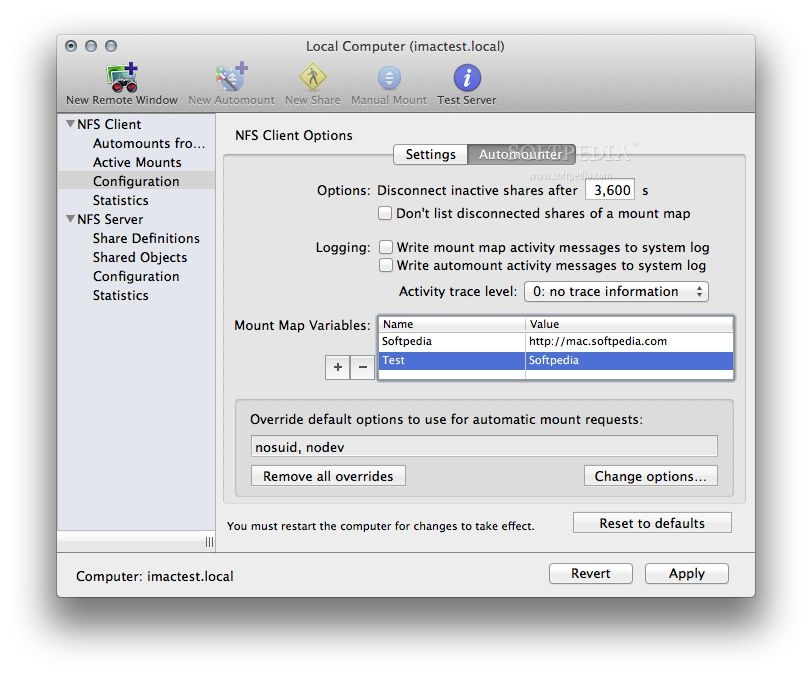
- #NFS MANAGER WINDOWS INSTALL#
- #NFS MANAGER WINDOWS SOFTWARE#
- #NFS MANAGER WINDOWS CODE#
- #NFS MANAGER WINDOWS WINDOWS#
The next screen will just ask you to “ Select features“, you can simply click “ Next“!įinally, you’ll be shown a screen asking you to confirm the installation items, we now choose “ Install“, this screen and the selection of features and roles to add should look as follows: Once checked, click on the “ Next” button… You will now be presented with a screen titled “ Select server roles“, expand the following sections, then check the “ Server for NFS” option as shown in the screenshot below: On the next screen you’ll be asked to choose the server that you want to add the role or feature to, select your server from the list that appears (you’ll probably only have one in the list anyway!) and then click Next… Once you have clicked on the “ Add Roles and Features” link you should then be presented with this wizard:Īccept the default “ Role-based or feature based installation” and then click Next…

#NFS MANAGER WINDOWS WINDOWS#
Installing NFS Server on Windows Server 2016įirst up, we need to login to our Windows Server and open up the Server Management tool, once open, click on the large text link labelled “ Add Roles and Features” as shown here:

on the VM and transferring it at regular intervals.
#NFS MANAGER WINDOWS INSTALL#
My plan is to install a new VM running Ubuntu Server 16.04 that will host an instance of NextCloud, this will provide me, my family and friends with a free alternative to DropBox with masses of space in addition to all the other cool things that NextCloud offer such as encrypted video calls and the like.īy setting up an NFS server on the host operating system, instead of provisioning this Linux VM with a massive virtual hard disk (and taking drive space away from the host OS) I have instead provisioned it with a single 20GB virtual hard drive and will then use NFS shares on my Windows Server to host the files on the physical disk and thus be automatically part of my backup routine and alleviate the need for using rsync or rsnapshot etc. My home server has 1x SDD (500GB for the host operating system and local applications) in addition to 2x WD Red 4TB hard drives in a hardware RAID1 configuration, I periodically backup this array over my LAN to a Buffalo NAS device. In the past I used to run VMWare ESXi and hosted everything in their own virtual machine for better isolation and performance although since then, I had tested and was extremely happy with the performance of running virtual machines on top of Hyper-V and Windows Server so when I re-built my home server several months ago I decided to go down that route instead.Īnyway, enough of all that, let me explain why I have such a need for this kind of set-up…
#NFS MANAGER WINDOWS CODE#
#NFS MANAGER WINDOWS SOFTWARE#
In my home network I have a single (in an attempt to be eco-friendly) Intel i7 server running Windows Server 2016 Standard edition, I use this server for hosting my family media, files and various database engines and ActiveDirectory for local development (I’m a software engineer by trade!) in addition to several Hyper-V virtual machines that do various tasks, all of the virtual machines are running a derivative of Linux. In this post I will explain how you can configure an NFS Server on a Windows 2016 Server and connect/mount the NFS exports on Linux clients, in my case I wanted to run a Linux virtual machine whist ensuring that the actual data resides on physical disks on my host machine ensuring that the data is automatically part of my nightly backup routine and did not need to run separate backup scripts on the VM(s).


 0 kommentar(er)
0 kommentar(er)
